|
Executive Summary执行摘要
现代铁路滚轴被誉为“工程的胜利”。在英国,反式设计和乘客友好的风格相结合,为游客提供了一个既舒适又愉快的旅程。毫无疑问,由于直接照明、明亮的色彩和现代性以及先进的技术,新列车是首选的,这些技术为乘客提供了优越的旅行体验。然而,这些便利设施的价格是增加了重量,或者,对于有技术头脑的读者来说,是每名乘客的空间。根据英国医学杂志发表的报告指出,英国超重或肥胖人口的数量从1999年的43%上升到2007年的53%。事实上,英国铁路网使用的滚压钢管也是如此。
本文对超高比质量引起的基础问题、运行和技术原因以及安全问题进行了研究,更重要的是,介绍了降低比质量的潜在方法,以及每种方法的估计重量节省。E升级材料,改进形状设计和拆除不必要的行李。
Modern railway rollingstock is acclaimed as a ‘triumph of engineering'.In Britain,a combination offantastic design and passenger-friendly styleprovidespassengerswith acleanandpleasantjourney. There is no doubt thatnew trains are preferred, in virtue of theindirect lighting,brightcoloursand modernamenities, as well asadvancedtechnologies,which provide a superior travelexperience for the passengers.However, these amenitiescome at a price,which isthe increased weight,or, fortechnically minded readers, massper passenger space.According to reports publishedin theBritish MedicalJournal, the number of overweight orobese people inthe UK has risen from 43% in 1999 to 53% in2007.Indeed, it is the same case for the rollingstock usedfor the British railway network.
In this article, a study ofthefundamental issuesabout the increasing specificmass,the operational and technical reasons behind, and safety issues resulted from the over-highspecificmass is presented.More importantly, potential methods toreduce the specificmass are described, together with estimatedweight saving for each method.These methods include upgrading of materials, improved shape design and removal of unnecessary luggage.
I.Introduction 引言
本文研究了超高质量引起的基本问题,包括比质量增加、运行和技术原因以及安全问题。更重要的是,描述了降低特定质量的潜在方法,以及每种方法的估计重量节省。
In this article, a study of thefundamental issues about the increasing specificmass,the operational and technical reasons behind, and safety issues resulted from the over-highspecificmass is presented. More importantly, potential methods toreduce the specificmass are described, together with estimated weight saving for each method.
1.1Assignment brief 转让简介
现代铁路滚轴被誉为“工程的胜利”。在英国,将奇妙的设计和乘客友好的风格相结合,为乘客提供了一个愉快的旅程。毫无疑问,由于直接照明、明亮色彩和现代化,以及先进的技术,新列车是首选,这些技术为乘客提供了优越的旅行体验。然而,这些设施是以增加重量为代价的,或以技术为目的的读者,以乘客空间为质量单位的。
Modern railway rollingstock is acclaimed as a 'triumph of engineering'.In Britain, a combination of fantastic design and passenger-friendly styleprovides passengerswith acleanandpleasant journey. There is no doubt that new trains are preferred, in virtue of theindirect lighting,brightcoloursand modernamenities, as well as advancedtechnologies, which provide a superior travelexperience for the passengers. However, these amenitiescome at a price,which isthe increased weight,or, fortechnically minded readers, massper passenger space.
1.2Methodology 方法学
本文研究了超高质量引起的基本问题,包括比质量增加、运行和技术原因以及安全问题。更重要的是,描述了降低特定质量的潜在方法,以及每种方法的估计重量节省。
In this article, a study of thefundamental issues about the increasing specificmass,the operational and technical reasons behind, and safety issues resulted from the over-highspecificmass is presented. More importantly, potential methods toreduce the specificmass are described, together with estimated weight saving for each method.
1.3Scope
This article focuseson therolling stocksof modern railway in Britain. In order tofind outthe weightsaving that may beaccomplished;we considered potential methods for thereduction of the specificmassforseveraltypes of train.
1.4Assignment structure
The first sectionpresents a brief introduction on this assignment, followed bya description of the background of the modern railway rolling stock andspecific massofdifferent traintypes in the second section. Inthe third section,reduction of thespecific mass is discussedbased onsimulations by the DetailRailVampire. Finally,aseries ofmethods to reducethe specific mass and estimate the amount of weight saved. These methods include upgrading of materials, improved shape design and removal of unnecessary luggage.
II. Background
In virtue of the Industrial Revolution, The Great Britain owns the oldest railway system in the world.In 1825, the first ever locomotive-hauled public railway opened in UK.Since then, the railway network in theGreat Britain has increased rapidly. Indeed, the United Kingdom is one of the founding members of the International Union of Railways (UIC).Till 2014, a network consisting of 15,753 kilometres (9,788 mi) standard-gauge lines and 5,268 kilometres (3,273 mi) electrifiedlines has been achieved(Nash, 2002). These lines range from single to double to quadruple track. Moreover, some cities have separate rail-based mass transit systems,such as the extensive and historic London Underground. Most of the railway track is managed by Network Rail. The UK railway network is the 18th largest in the world.In spite of lines that have being closed in the 20th century,the UK railway network remains one of the densest rail networks. It is one of the busiest railways in Europe, with a passenger flow20 % more than the French Rail, which is the second busiest one in Europe. Indeed, the passenger flowof British railwayis even higher than that of Spain, Switzerland, The Netherlands, Portugal and Norway combined(Gutierrez et al., 1996).
Over the past decade, rail travel in the United Kingdom has enjoyed a significant renaissance with kilometres/miles travelled matching and surpassing the maximum of the 1940s (see Figure 1 below). This can be attributed to a shift away from private motoring(due to growing road congestion and increasing petrol prices) and the rapidly increasingcost of alltravelling modes(Haubrich, 2001).
(a) (b)
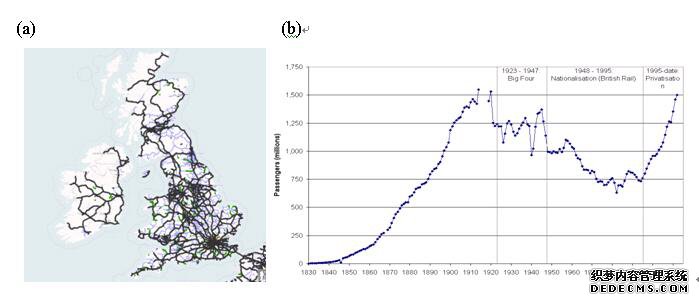
Figure 1 (a) Current mainline railway lines in the United Kingdom; (b) Rail passenger numbers in Great Britain, 1830–2012 (millions)
Additionally, the British railway has established links to various Europe countries, including France, Belgium, Germany, Netherlands and North Ireland.Since 1994, the British railway network has been connected with that of the continental Europe by an undersea rail link called the Channel Tunnel(Givoni and Rietveld, 2007).
In spite of the long history, theBritish railway is facing several severe issues, including over-loading, ineffective management and upgrading of rolling stock. Among these problems, upgrading of rolling stock is one of the most urgent issues due to the rapidly increasing mass per passenger space(Gibson et al., 2002).
Rolling stock is defined as self-propelled (such as trucks and trains) or pulled (such as trailers and coaches) transportationequipment that moves on wheels.Previously, rolling stock referred to the vehiclesthat moveon a railway. Nowadays, this concept has expanded to include the wheeled vehicles used by businesses on roadways(Ivory and Alderman, 2005).Generally, rollingstock includesbothpoweredandunpoweredvehicles, including locomotives,railroadcars,coaches, and wagons(Wilson and Norris, 2005, Knaap et al., 2001). However, in some countries(including theUnited Kingdom),this termreferstounpoweredvehiclesonly,specifically excluding locomotives(Grantham, 2001)which is referredas running stock, tractionor motive power(Geyer and Davies, 2000).
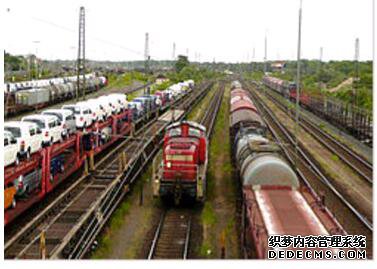
Figure 2A variety of rolling stock in railway yard
In Great Britain, different types of rolling stock were given specific code names, often after animalscommonly known in UK. These codes were telegraphese, somewhat analogous to the SMS languagenowadays.DocklandsLight Railwayrollingstockrefers to the passenger trains and service vehiclesused on the Docklands Light Railway (DLR),which serves the LondonDocklands area (located in the eastofLondon).The passengerstockconsistsofhigh-floor,bi-directional andsingle-articulated EMUs. The trains are formed from sets of 2or3semi-permanently connected cars, theincrease to 3-car trains being introduced progressively on the busiest routesin2010, followed by substantial platform extension works. The upgraded trains arefully automated andrequire nodriver.Instead, a Passenger Service Agent (PSA) titled the "Train Captain" in thesystem's earlier yearsis in attendance in each train and can take control at a driver'sconsole in cases of emergences(Hull, 2005).Consisting of 149 cars, DLR rolling stock had three different types, but only two of them (the B90/B92/B2K fleet and the B07 fleet) are in operation.Figure 3 shows a B07 stock train, which was introduced in 2005 and is one of the trains equipped with PSA system.#p#分页标题#e#
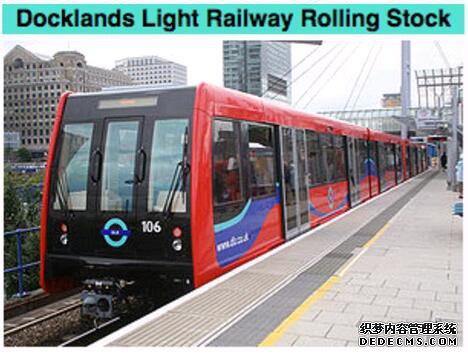
Figure 3B07 stock train in 2008 livery at Poplar DLR station
Nevertheless, there are several problems for the DLR stock. The first one is the violent shaking as the train travels at higher speeds on the straight parts of the route, which can be attributed to the fact that all DLR stock haswheels which have a more angled profile than thaton mainlinetrains, which is effective in dealing with the tight curves encountered on DLR routes.Another manifestationof the DLR's wheel geometry and tightrailcurves is that thissetup generates noise.This noise is amplifiedbythe use of steel box torsiongirders(e.g.Marsh Wall elevated road crossing adjacent to South Quay DLR Station)(Cowie, 1999).
III. Eigenvalue analysis
In this part, the dynamics of vehicles are investigated and discussed. More specifically, vehiclevibration is discussed in terms of the modesand their respectiveEigenvalues.In other words, different modes andtheir Eigenvalues in terms of railways are introduced and compared to each other.
3.1Vibration
Vibration has been one of the long-standing problems for railway transport, especially the high-speed trains. Consequently, there is tremendous interest in vibration analysis of fast trains.Vibration is produced from the interaction between the wheels of trains and the rails underneath. Due to the everincreasing speed (currently up to 300km/h) of modern trains, it is important to study this vibration. This researchdoes not only contribute to the increasedcomfort of passengers, in terms of lower noise and vibration levels. Vibrationsof cars and light trucks travelling at different speeds can be attributed toseveral reasons, including poorwheel balance, imperfect tire/wheel shape, brake pulsation, worn or loosedriveline,suspension,steering components, etc.. Also, foreign material stuck in the tire tread can be the reason of vibration in some cases, e.g. road tar in summer. Vibrations can be causes for various problems, including passenger injury, component wear and harsh noise. Therefore, technologies that can minimize the vibrations of travelling vehicles are urgently needed. Nevertheless, theoretical studies regarding to the vibration has to be conducted in order to come up with solutions to minimize it. One of the most commonly used parameter for the vibration analysis is the Eigenvalue.
3.2Eigenvalue
Aneigenvector orcharacteristic vector of a square matrixA is a non-zero vector vthat, when the matrix multipliesv,yields the same as when somescalar multipliesv,thescalar multiplieroften beingdenoted by λ. That is:

The vibration of fast trains is governed by a quadratic palindromic eigenvalue problem.Therefore, based on the finite element model of the rail sections, following palindromiceigenvalue problemneeds to be solved for the purpose of vibration study:
(1)
with the matrix quadratic
(2)
Here, the values of A0andA1dependon several parametersassociated withthe velocity of the moving train.The eigenvaluesare related to the vibration frequencies while the corresponding eigenvectorsxreflect the shape of the vibration. The problem is described aspalindromicasA1appears at both ends of equation (2) and A0issymmetric.
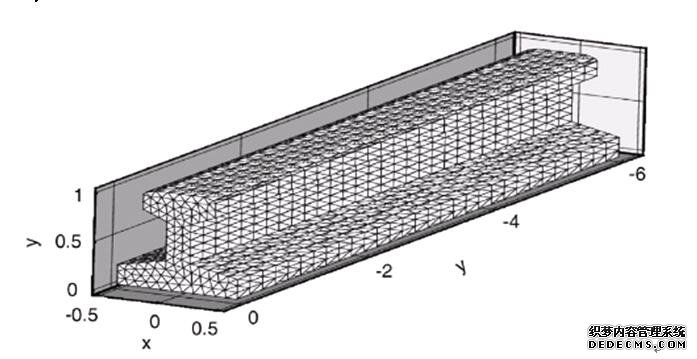
Figure 43D railway model
To establish a better understanding of the vibration, modelling is widely required. Herein, a simulation of train vibrations using DeltaRail Vampire, a freeware commonly used for vehicle simulations is as shown inFigure 5. As can be seen, the vibration is restricted between tracks, although the vibration can be in x-axis, y-axis and z-axis.
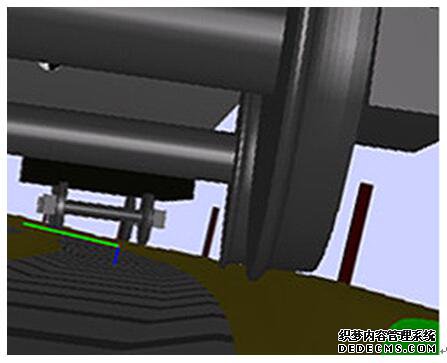
Figure 5 Simulation of train vibration by DeltaRail Vampire Freeware
3.3 Vibration modes
Vibration is a mechanical phenomenon whereby oscillations occur about an equilibrium point. The oscillations may be periodic such as the motion of a pendulum or random such as the movement of a tire on a gravel road. Generally, vibrations can be categorized as free vibrations and force vibrations. The former occurs when a mechanical system is set off with an initial input and then allowed to vibrate freely, while the latter occurs whena time-varying disturbance (load, displacement or velocity) is applied to a mechanical system. In most cases, the vibrations of trains are combinations of free and forced vibrations.The free vibration comes from inevitable shaking of the moving coach itself, although this vibration is usually negligible and predictable.The forcedvibration comes from the restrictions by the tracks and surrounding atmosphere. This part of vibration increased exponentially with the travelling speed of the train and is significantly higher in harsh environments such as seaside and mountains where strong winds are frequently observed. To make it worse, modelling and predictions of this vibration mode is extremely challenging due to the presence of various parameters.
3.4Modal analysis at different speeds and conicities
Using the Vampire freeware, an analysis into the various modes of vibrationof a 4-axle vehicleis conducted as an example. Indeed, there are literally thousands of combinations of parameters thatcan beput together in thefreeware. Therefore, a simplifiedmodelling containing 5 different speeds and 3different conicities is presented.The vehicle options are given in Table 1 below.
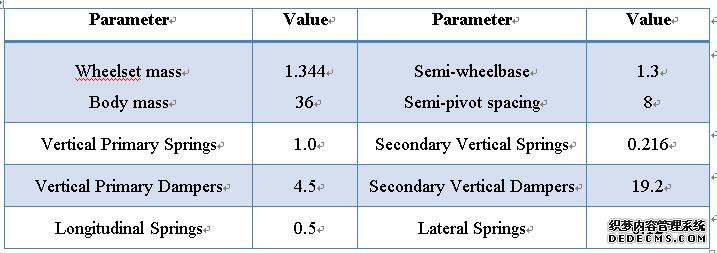
Table 1 Vehicle Parameters for Modal Analysis
According to the results, the mass of passengersplays a key role in the vibration of trains, although it is not the major part of the overall weight of trains. This can be explained by the non-uniform and varying distribution of passengers, thus the mass. In a rapidly moving train, the mechanical components are usually tightly fixed and uniformly distributed, causing limited vibrations. On the contrary, passengers on board areusually loosely linked to the main body of the train, resulting in additional and unpredictable forces applied on the train. As a result, vibrations occur.
IV. Conclusions
In this assignment, the current status of the British railway system is described, followed by a discussion on the current issuessuch as increasing net weight. In the third section, the vibration ismodelling and analyzed using DeltaRail Vampire, a freeware commonly used for vehicle simulations. It has been found thatthe mass of passengers is the dominant factor in vibration. Therefore, solutions to minimize the vibration shall focus on increasing uniformity of passenger distribution and ways to make passengers tightly fixed to the train, as in the case of the mechanical components. In the next section, several methods to reduce the vibration by decreasing thenet weightare recommended.
V. Recommendations
Toreduce the vibration of trains, the net weigh of the train (the train itself and passengers on board) has to be reduced. Indeed, there are a variety of ways to achieve that, but only 3 ways are discussed here.
The first solution is to change the material of the train components, especially the case. Currently, most of the trains, including the most advanced high-speed ones are made of steel, which has a relatively high density (7.75 – 8.05 g/cm3). This has been the major reason for the heavy coaches used nowadays. If steels are replaced by aluminium (used of aeroplanes) or even titanium (aerospace applications), the net weight of the train itself can be reduced by over 50 %. Additionally, the material of the inner decorations such as seats and windows needs to be upgraded, too. For instance, due to the great advancements in synthesis technologies,plastics and fibresof extremely low density should be used instead of metals and wooden products. Last but not least, the mechanical components should be minimized in terms of size and overall quantity, although the materials of thesecomponentscannot be changed in most cases. The upgrading of materials used is believed to be the most effective way to reduce the net weight of the train.
Another solution is to change the design of the train. This method is a complementary one to the material changing method as the materials has to be taken into consideration in any change in designs, while a modified design can realize certain material changing. For instance, the ‘Shinkansen’in Japan achievedextremely high speed by adopting a novel shape design that is totally different from all designs observed. On one hand, this design reduces the air resistance during travelling; on the other hand, the new design allows for replacement of steel by aluminium. Another example is the High-speed Railway (HSR) of China. The HSR trains adopted a modified design (based on ‘Shinkansen’) which further reduces the air resistance (especially in harsh environments) and utilizes new generation of alloys, instead of steel and aluminium. As a result, the HSR is one of the fastest trains globally (with a speed up to 500 km/h).
The third way to reduce the net weight is to set a limit of luggage per passenger. More specifically, passengers are allowed to have essential luggage only (such as handbag and laptop), while bulky and heavy luggage can be carried by traditional trains travelling at lower speeds. In fact, this rule has been adopted by the aviation industry since 1970s and made a significant contribution to the weight control of aeroplanes. In this way, the average ticket price may be lower as more passengers are allowed on board.#p#分页标题#e#
In summary, upgrading of materials,improved shape design and removal of unnecessary luggageare the three methods commonly used to reduce the net weight of the trains, especially the high speed ones. Among these methods, upgrading of materialsis believed to be the most effective one as density of different materials can vary significantly. By using the three methods together, it is believed that net weight of trains can be minimized, thus minimizing the vibrations.
References
COWIE, J. 1999. The technical efficiency of public and private ownership in the rail industry: the case of Swiss private railways. Journal of Transport Economics and Policy, 241-251.
GEYER, A. & DAVIES, A. 2000. Managing project–system interfaces: case studies of railway projects in restructured UK and German markets. Research Policy, 29, 991-1013.
GIBSON, S., COOPER, G. & BALL, B. 2002. The evolution of capacity charges on the UK rail network. Journal of Transport Economics and Policy, 341-354.
GIVONI, M. & RIETVELD, P. 2007. The access journey to the railway station and its role in passengers’ satisfaction with rail travel. Transport Policy, 14, 357-365.
GRANTHAM, A. 2001. How networks explain unintended policy implementation outcomes: the case of UK rail privatization. Public Administration, 79, 851-870.
GUTIERREZ, J., GONZALEZ, R. & GOMEZ, G. 1996. The European high-speed train network: predicted effects on accessibility patterns. Journal of transport Geography, 4, 227-238.
HAUBRICH, D. 2001. UK rail privatisation five years down the line: an evaluation of nine policy objectives. Policy & Politics, 29, 317-336.
HULL, A. 2005. Integrated transport planning in the UK: From concept to reality. Journal of transport Geography, 13, 318-328.
IVORY, C. & ALDERMAN, N. 2005. Can project management learn anything from studies of failure in complex systems? Project Management Journal, 36, 5.
KNAAP, G. J., DING, C. & HOPKINS, L. D. 2001. Do plans matter? The effects of light rail plans on land values in station areas. Journal of Planning Education and Research, 21, 32-39.
NASH, C. 2002. Regulatory reform in rail transport-the UK experience. Swedish Economic Policy Review, 9, 257-286.
WILSON, J. R. & NORRIS, B. J. 2005. Rail human factors: Past, present and future. Applied ergonomics, 36, 649-660.
|
 |
|||
| 网站地图 |


